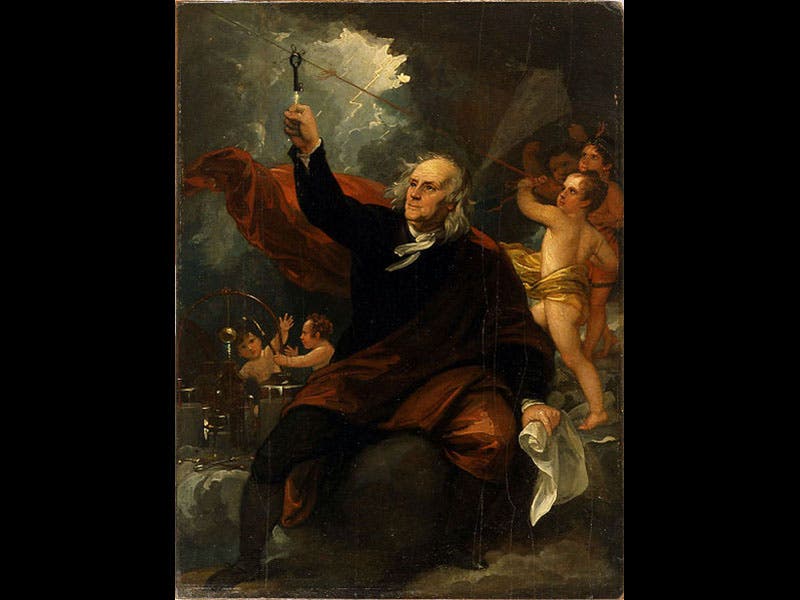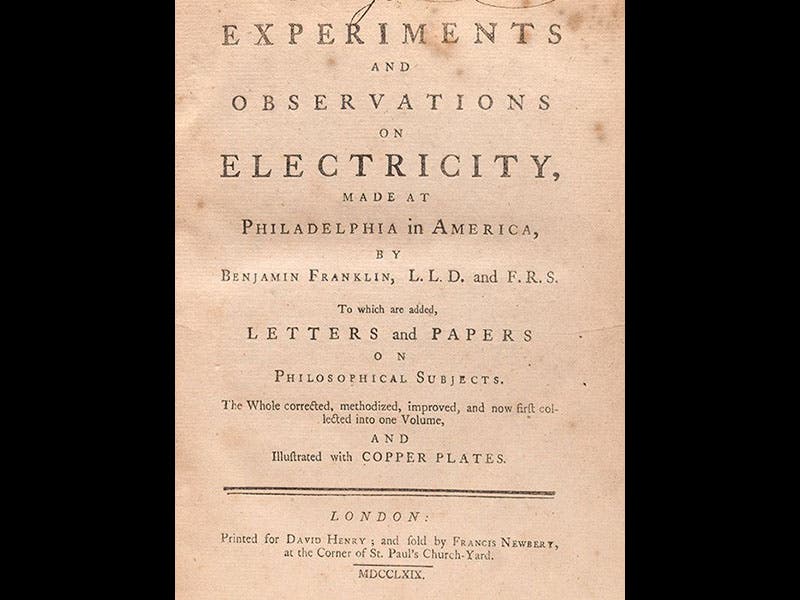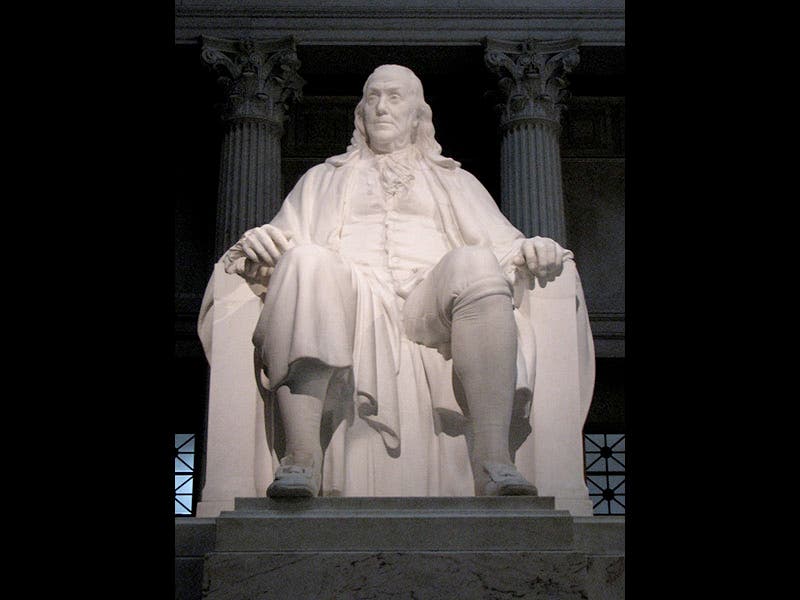Scientist of the Day - Benjamin Franklin
Benjamin Franklin, American statesmen and scientist, was born Jan 17, 1706. Most people know that Franklin did some electrical experiments and flew a kite, but few realize just how good a scientist he was; for many contemporary workers in the field, such as Joseph Priestley, Franklin was the greatest electrical experimenter of the century. He was admired by fellow scientists because of his proposal, in his Experiments and Observations on Electricity (1751-54), of a theory of electricity that would explain the multiplicity of electrical effects that, until Franklin, were bafflingly mysterious. Franklin's hypothesis is known as the "one-fluid" theory. He proposed that there exists an electrical fluid that can be found in all ordinary matter; it is positively charged (Franklin invents the word) and is self-repulsive, i.e, electrical fluid repels electrical fluid. However, electrical fluid is attracted to ordinary matter, which has a negative charge. In most cases, the combination of positive electricity and negative matter will produce a neutral state, but if you rub some electrical fluid onto a glass rod, it will repel other electrically charged objects. However, if you remove some electrical fluid from a rubber rod, leaving it negative, it will repel other negatively charged objects, but attract those with a positive charge. Franklin could even explain how a Leyden jar--the first capacitor--is able to store so much charge, and then release it so explosively when the inside conductor is connected to the outside one. Franklin's proposal of an experiment to demonstrate that lightning is an electrical effect was also a great achievement, and is justly famous, but it was the one-fluid theory that brought him his great reputation. And, with certain modifications, it is a theory that still holds true.
Benjamin West’s 1816 portrait of the electrical Franklin is oversaturated with artistic license, especially in its depiction of Franklin’s assistants, but it is still a charming painting (first image). There is a fine marble statue at the Franklin Institute in Philadelphia (third image). We have the 4th and most complete edition (1769) of Franklin’s Experiments and Observations in the History of Science Collection (second image).
Dr. William B. Ashworth, Jr., Consultant for the History of Science, Linda Hall Library and Associate Professor, Department of History, University of Missouri-Kansas City. Comments or corrections are welcome; please direct to ashworthw@umkc.edu.









